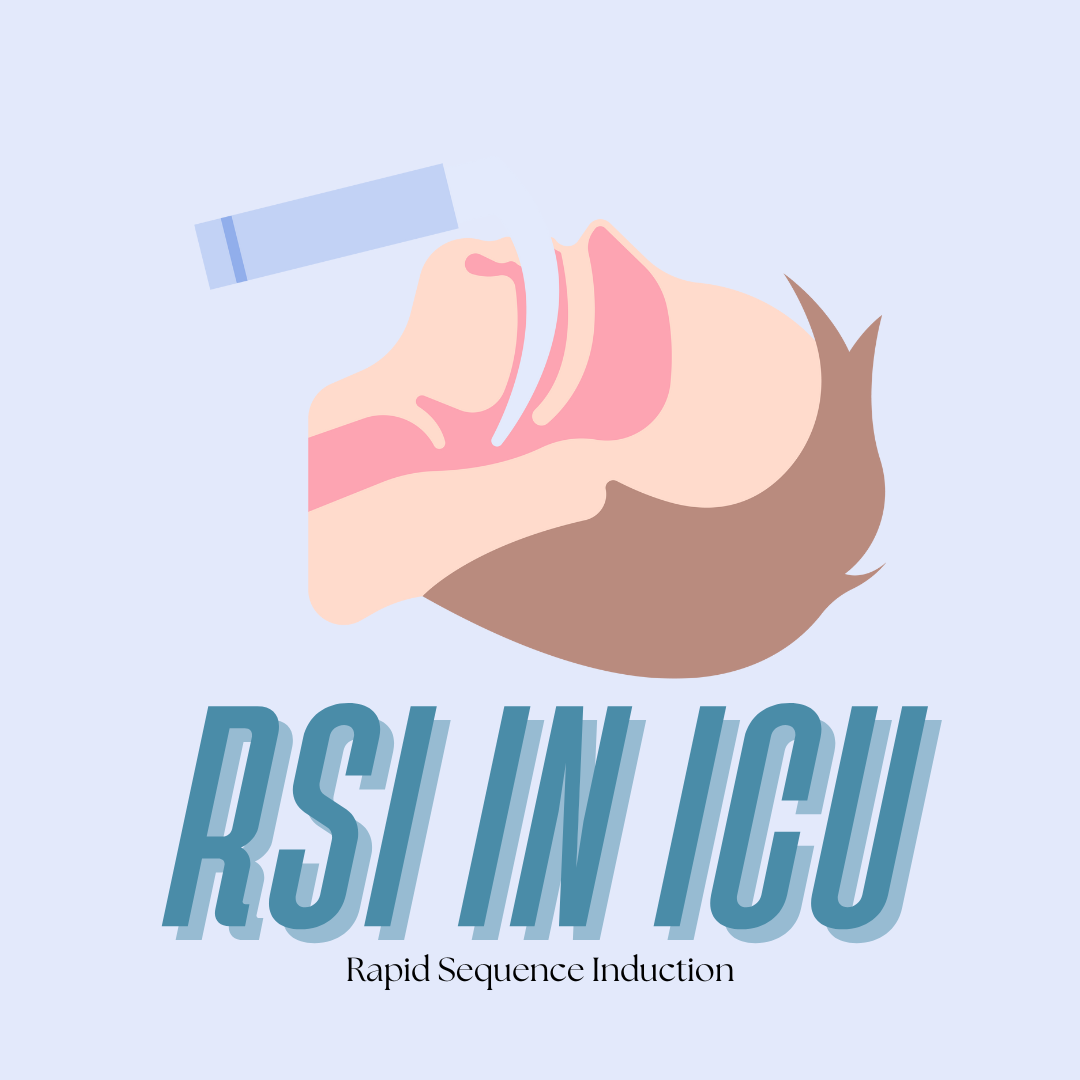Rapid Sequence Induction (RSI) in the Intensive Care Unit
Coming from the OR, this term is not new to me. However, an RSI done in ICU is very new and almost foreign. Typically, in the OR a patient needing a RSI prior to intubation is planned. You’ll have the urgent appendectomy on a patient who ate earlier in the day, RSI to the rescue. You get a patient who is on a GLP-1 medication, they’ll have a RSI too, because of the delayed gastric emptying. Any patient that is at risk for aspiration or needs an immediate airway will likely be a planned RSI.
What is a Rapid Sequence Induction or RSI?
RSI is the safest controlled way to expedite the intubation process. The process of a RSI includes sequencing of drugs to prepare the patient quickly and safely for an expedited intubation. From what I’ve experienced so far in ICU, each patient needed intubated has been by way of RSI. I believe that RSI is the standard for intubation in the ICU. Our department actually keeps “RSI Kits” in the OmniCell, which really comes in handy when you need to quickly pull the meds instead of pulling one by one.
Preparing for a Rapid Sequence Induction
The process for an RSI should be clear cut and consistent, with some modifications based on the patient when necessary. There “7 P’s” to guide you through the process safely.
Preparation
Preoxygenation
Paralysis
Protection
Placement
Postintubation Management
Preparation
This step is where you set the tone for the process. Ensuring every team member knows the plan and their role. Ensuring all the supplies are ready, like a glidescope. Calling ancillary teams, such as RT. Moving the bed away from the wall to make room. Getting non-violent restraints ready. This list can be effected by your hospital’s policy.
Preoxygenation
Ensuring the patient is adequately oxygenated prior to the RSI. This is important because once paralytic drugs are administered, the patient can no longer maintain their own oxygen levels. If there is any delay in intubation, having your patient’s oxygen at 100% prior to the attempt will decrease the risk of hypoxia. There are other methods where you apply a nasal cannula during the induction and the thought is the patient still ‘absorbs’ the oxygen through their nasal passage following paralysis.
Pretreatment
If your patient is awake and alert, you will likely be asked to administer a small dose of Versed (midazolam)(or something alike) to help relax the patient prior to the procedure. I’ve been in situations where this step is intentionally left out because there would be no benefit to the patient.
Paralysis
The induction medication and the paralytic medication are given during this step. The induction mediation is given first by rapid IV push. Then immediately followed by the chosen paralytic.
Protection
Ensure the bedside team has on appropriate PPE. But also, protection from aspiration. I my experience, this has been done via cricoid pressure. However, there is evidence that no longer recommends cricoid pressure, but does recommend BURP.
Placement
Intubation should be done under direct visualization, typically via the Glidescope, but sometimes a standard laryngoscope. Then placement should be verified by bilateral breath sounds.
Postintubation Management & Medications
A chest x-ray should be performed to visually verify placement of the ET tube and see if there are any recommendations on the placement.
The standard choice of medications for RSIs at my facility have been Versed, Etomidate, and Rocuronium.
Pre procedure sedation is provided by the Versed (midazolam). Once the patient is sufficiently oxygenated and everyone is ready, next is the Etomidate for deeper sedation. Ketamine, Versed, Fentanyl, and Propofol are other options for this step.
Ketamine is a good choice for hypotensive patient. If Propofol is chosen, keep in mind the risk for hypotension. Rocuronium (Zemuron) is the nondepolarizing neuromuscular blocking agent used for paralysis. It has a rapid onset of 1-2 minutes which facilitates the process to be done quickly.
A Few RSI Kit Tips
Some RSI kits may contain Verocuronium and Rocuronium. They are not the same drug, so ensure you confirm which is being requested. The dosages are very different and the onset and duration differ.
When pulling out an RSI kit remember you may have to pull some of the kit from the refrigerator.
Remember to keep the unused medications from the kit secured until you know how the pharmacy wants you to return the excess meds. Keep track of what and how much you did administer because likely the medications had not been ordered due to the urgent nature and you will need to chart them once the patient is stabilized.



